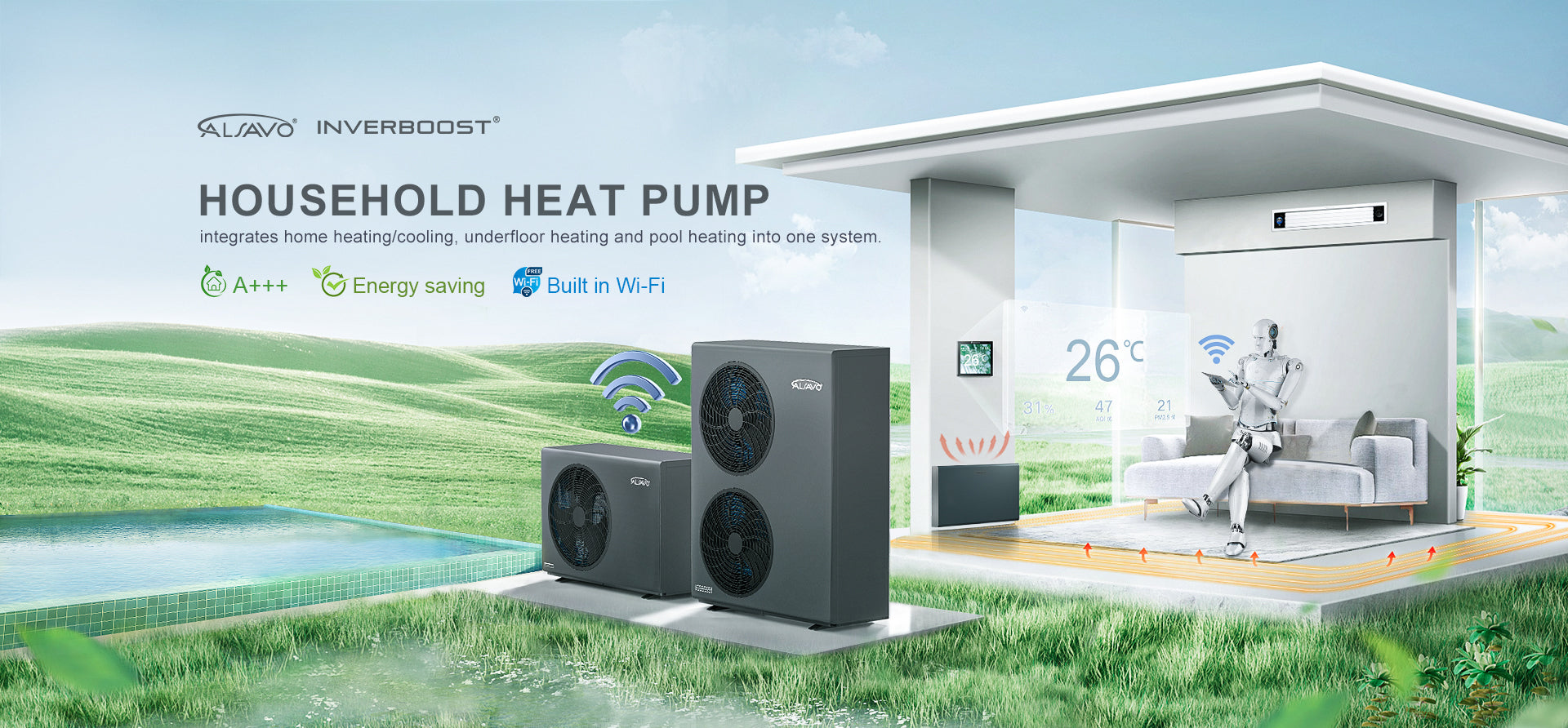Smart home technology has revolutionized the way we interact with our homes. With the rise of the Internet of Things (IoT) and the development of connected devices, homeowners can now control various aspects of their homes, such as lighting, temperature, and security, with just a few taps on their smartphones or tablet. This technology has not only made our homes more convenient and comfortable but also more energy-efficient and cost-effective.
To optimize their product to gain the market, the heat pump companies set their eyes on smart controls. Smart controls are an advanced technology that can optimize the operation of the air handling unit (AHU) in a heat pump system. These controls use sensors and algorithms to allow for the optimization of the AHU's operation based on various factors such as the building's occupancy, weather conditions, and other parameters.
One of the main advantages of smart control technology is its ability to monitor and adjust the operation in real time, allowing for more efficient use of energy. For example, the smart control system can adjust the heating or cooling output of the heat pump to match the changing demands of the building, thereby reducing energy consumption. Another advantage of smart control technology is its ability to provide remote access to the heat pump's settings. This feature allows homeowners or building managers to monitor and adjust the settings of the heat pump from anywhere, using a gadget.
Here are some usual ways that smart controls can optimize the operation of the AHU in an air source heat pump:
Occupancy-based control:
Smart controls in AHUs can detect the number of people in a building and change airflow accordingly. This allows them to maximize energy efficiency while maintaining a comfortable environment. For example, if the building has fewer occupants, the smart controls may recognize this and modify the AHU's airflow to minimize energy use. If there are more people present, the smart controls can detect this and boost the airflow to keep the indoor climate comfortable. This technology enables accurate and efficient management of AHU's operation, resulting in cost savings and higher levels of comfort.
Weather-based control:
Smart controls in AHUs have the ability to sense and monitor the outside temperature, humidity, and other weather conditions, and make real-time adjustments to the system's performance. By doing so, the AHU can be optimized for maximum energy efficiency and comfort levels. For instance, on a hot and humid day, the smart controls can detect the high humidity levels and high temperature outside, and increase the AHU's cooling capacity to maintain the desired comfort levels indoors. Conversely, on a cool and dry day, the smart controls can reduce the AHU's airflow to save energy, while still maintaining a comfortable environment indoors. By automatically adjusting the system's performance to the external environment, smart controls can significantly improve AHU's energy efficiency, reduce energy costs, and provide a more comfortable indoor environment for the occupants.
Time-based control:
Smart controls in AHUs can also schedule the system's operation based on the building's occupancy and usage patterns. By doing so, the AHU can be optimized for energy efficiency, reducing unnecessary energy consumption during off-peak hours or when the building is less occupied. For example, the AHU can be programmed to operate at lower capacity during weekends or at night, when the occupancy is lower, to save energy while still maintaining comfortable indoor conditions. This feature can help to reduce energy costs and lower carbon emissions while ensuring that the indoor environment remains comfortable for the occupants. By optimizing the operation of the AHU based on the building's occupancy and usage patterns, smart controls can significantly improve the overall energy efficiency of the system, resulting in significant cost savings and environmental benefits.
Predictive maintenance:
Smart controls in AHUs can monitor the performance of the system and predict when maintenance or repairs are needed. This feature allows the system to operate more efficiently and reliably by detecting any potential issues early on before they become serious problems. The smart controls can use advanced algorithms to analyze data from the AHU, such as temperature and pressure readings, and compare it to historical performance data to identify any anomalies or potential issues. By alerting maintenance staff to any necessary repairs or maintenance, smart controls can prevent breakdowns and improve the overall reliability of the system. This can reduce downtime, extend the lifespan of the AHU, and ultimately save money on costly repairs or replacements.
Overall, the trend of smart control on heat pumps is expected to continue as more advanced sensors and algorithms become available, allowing for even more efficient and precise control of the heat pump's operation. As smart home technology continues to evolve, we can expect even more advanced features and capabilities, making our homes even smarter and more connected than ever before to create a truly smart and sweet home. Smart control brings humans a better life, and it still a long way to go for the air source heat pump manufacturer.
 heat pump companies
heat pump companies air source heat pump
air source heat pump air source heat pump manufacturer
air source heat pump manufacturer






